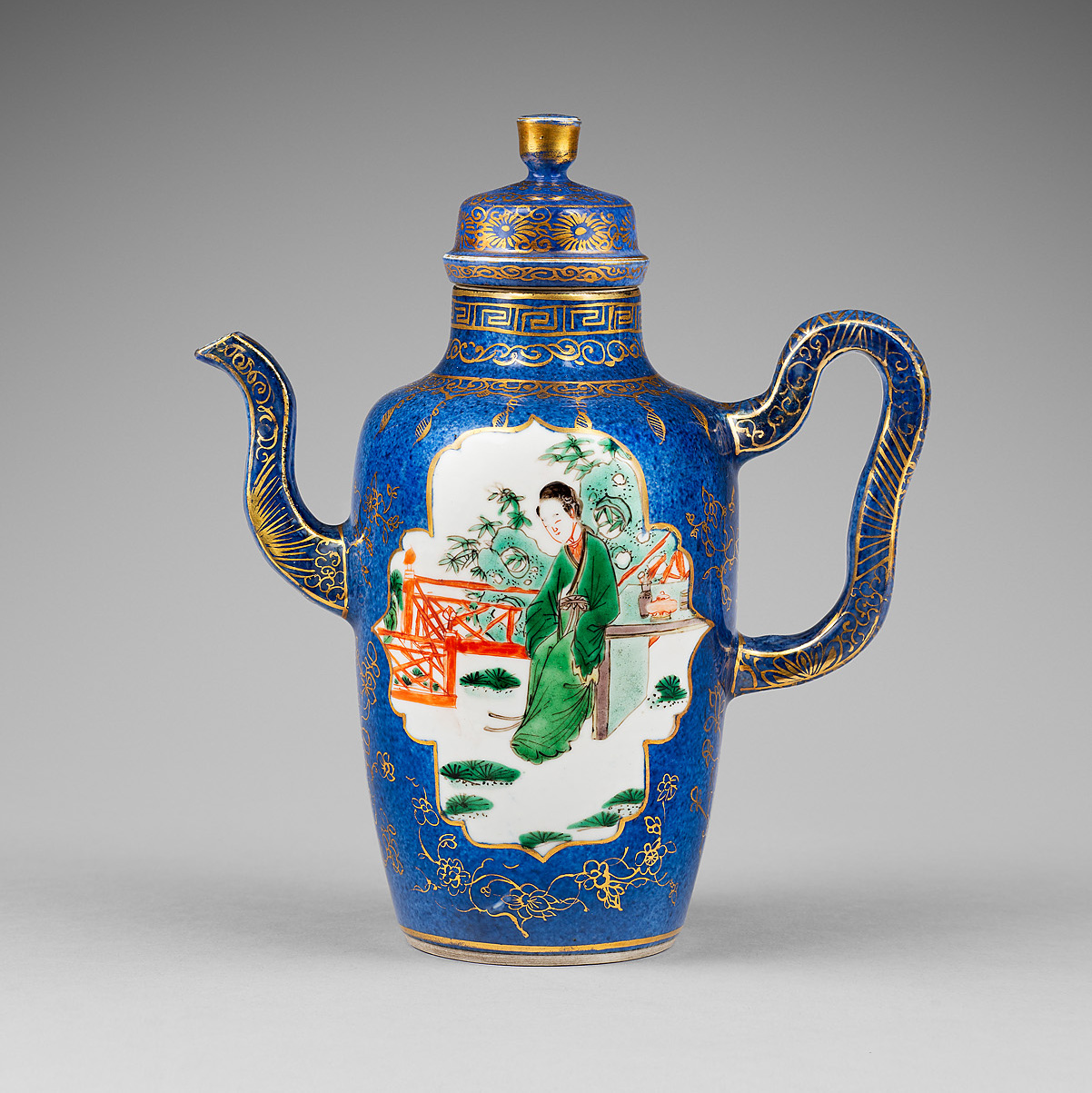The cylindrical wine pot with a broad shoulder tapering toward the foot ring has a S-shaped spout and an ear-shaped handle. It is painted in underglaze powder blue, overglaze famille verte enamels and gold. On each side is a barbed quatrefoil panel outlined in gold and reserved in white.
The wine pot presents two distinct scenes: on one side, an elegantly attired lady reclines against a table bearing three small containers, situated within in a fenced garden adorned with shrubs and foliage emerging from a perforated rock in the background. The opposite side depicts a lady seated on a stool, gazing at herself in a mirror amidst a garden.
